The sun assaulted me at Baalbeck ruins in Lebanon’s Bekaa Valley. Brilliant blue skies were perfect for viewing this world’s largest Roman temple, but in the 90-plus degree temperatures I soon ran out of water. I blinked sweat out of my eyes and headed for the nearest kiosk to buy another bottle. A middle aged man with a prickly mustache and a kindly smile walked up as I reached for my wallet. “You speak English?” he asked. When I smiled and nodded yes, he whipped out a 1,000 Lebanese Pound bill and paid for my water. I protested but he wouldn’t hear of it. “Welcome to my country. Welcome to Lebanon.”
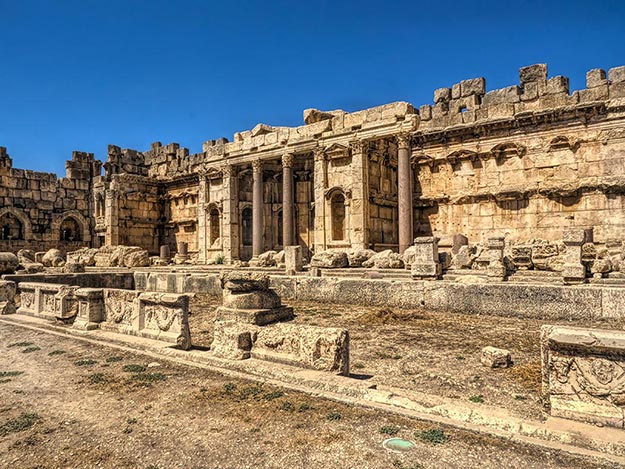
It was just one of many kindnesses I experienced during my time in this oft-maligned country that many insist is a dangerous travel destination. After five days of traveling around the country, I believed a local woman when she said that Lebanon is the only country in the world where she feels perfectly safe walking home alone at 4 a.m. But “safe” wasn’t a word that I initially equated with Lebanon.
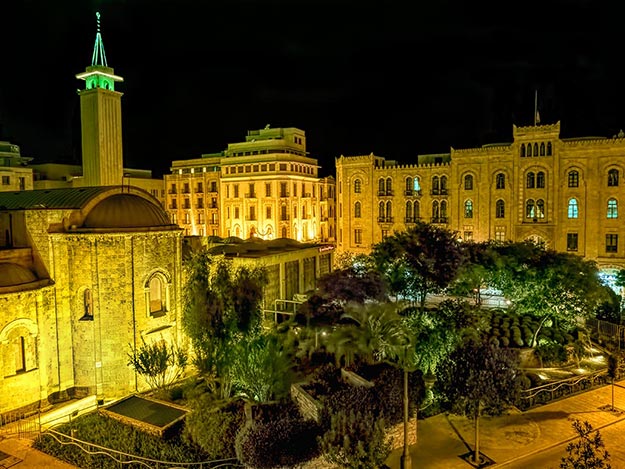
I’d added Lebanon to my travel wish list earlier in the year, but wavered over whether or not to go. It’s long border with Syria was a concern, and the U.S. Department of State’s travel advisory was more than a little alarming. It advised Americans to avoid all non-essential travel to the country. Not only did it warn of of kidnapping for ransom schemes, it also stated that government employees must obtain special permission to visit the Bekaa Valley or the southern region, both of which border Syria. I had all but decided to forego Lebanon when I happened to share a taxi with two young Lebanese men in Cyprus. “It’s totally safe to travel to Lebanon,” they insisted. “You should go.” I booked my ticket that same evening.

The taxi ride from the Beirut airport was a mad scramble through traffic-choked streets where stoplights and lane indicators were little more than suggestions. My cabbie bullied his car into minuscule openings between vehicles or diverted into oncoming traffic to pass. When that didn’t work, he rolled down his window, shook his fist and, occasionally, lambasted other drivers with a stream of vitriol. To take my mind off the crazy drivers, I focused on the landscape. Abandoned, hollowed-out buildings stood side-by-side with luxury hi-rise apartments and glitzy shopping malls. Police and soldiers armed with automatic weapons manned security booths and gated checkpoints at every major intersection. What had I gotten myself into?
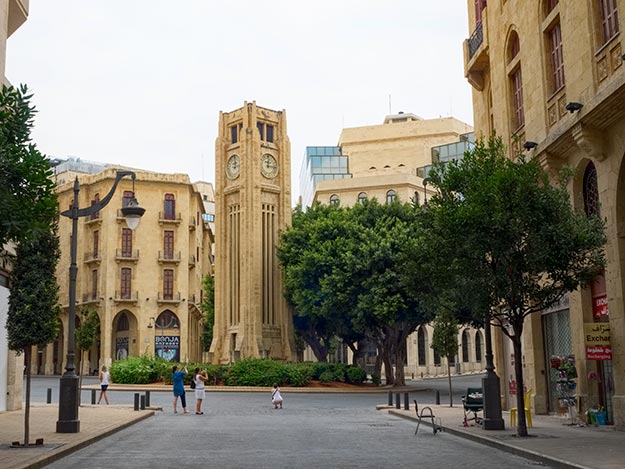
Initially, the downtown area of Beirut where my hotel was located did little to reassure me. Other than a handful of tourists, it was a virtual ghost town. Hungry, I wandered into one of the few cafes that was still in operation where the owner greeted me. “We no longer serve food,” he apologized. “Most of the shops and restaurants have closed since the city blocked the streets to traffic.”
I sat down anyway and over espresso he told me what life had been like in Lebanon for his parents and grandparents, who lived very simply off the land. “Today people no longer have Kanaa.” His brow furrowed in concentration as he searched through Google translate. “It’s a very important word, but one hard to translate into English…I think maybe contentment is the best translation.” We hadn’t yet solved the problems of the world but I was itching to see more of Beirut, so I asked for the bill. “No, no, it is my pleasure,” he insisted.
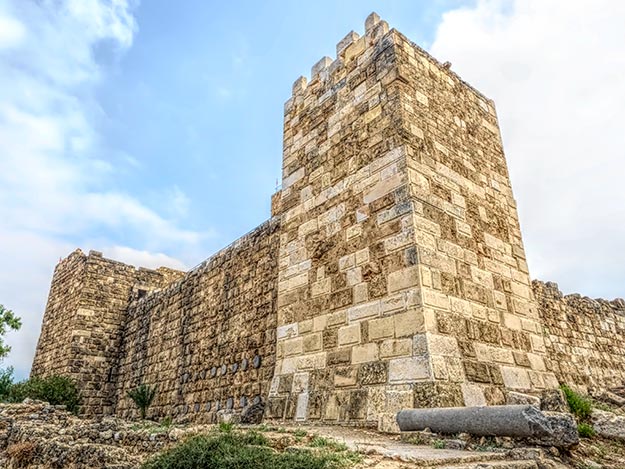
The following day I took a day tour to Byblos, Jeita Grotto, and Harissa, all located near the coast, just east of Beirut. Many archeologists believe that Byblos is the oldest continuously inhabited city in the world. Neolithic and Chalcolitic remains have been unearthed here, and there is no dispute that Phoenicians (known as Caananites in the Bible) began constructing stone dwellings on the site at least as far back as 6,000 BC. Even more fascinating, Byblos has been invaded, occupied, destroyed, and rebuilt by 17 different civilizations, each built upon the remains of the former in order to erase, to dominate.
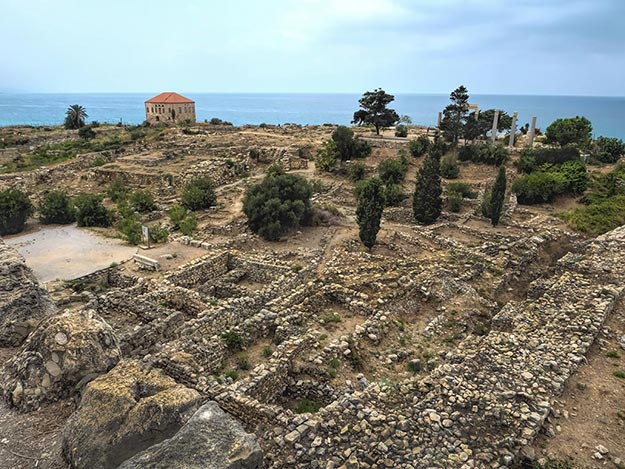
When excavating a site so rich in history, it is impossible to save everything. Instead, after taking core samples, archeologists decide which of the layers is most important. In the case of Byblos they chose to concentrate on the Phoenician ruins. Where possible, they preserved structures from other centuries as they dug. A Roman theater, for example, was moved to a nearby site so that archeologists could continue uncovering the Phoenician artifacts that lay beneath it. Likewise, a Citadel that the Crusaders had converted from an ancient church, using limestone blocks from Persian and Roman structures, was left intact. The Phoenician, Roman, Persian, and Ottoman artifacts that spread before me painted a particularly poignant picture. I couldn’t help comparing what happened at Byblos with our current troubled times, so rife with warfare and ethnic cleansing.
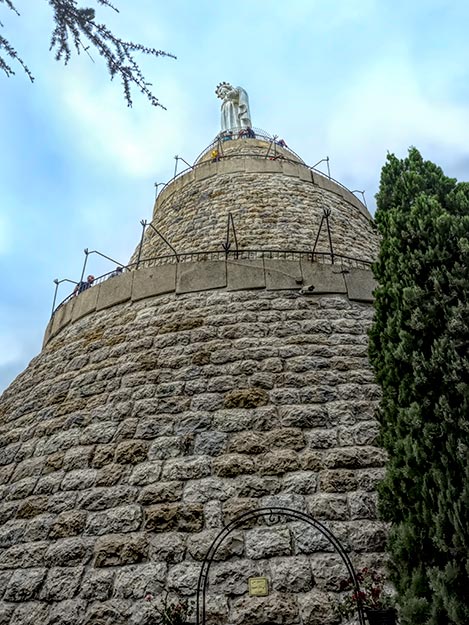
At Harissa we jumped forward several thousand years. Today, the Maronite Catholics are one of 17 religious communities that reside in Lebanon. In 1904, the Maronites decided to build a monumental statue of the Virgin Mary on the hillside behind their cathedral. Since its completion in 1908, it has become a popular pilgrimage site in Lebanon. I climbed to the top via a staircase that wraps around the statue like a serpent. On a pathway barely wide enough for two, I jockeyed with barefoot pilgrims, Muslim women in black abayas, children, lovers, and curious tourists to ascend. At the top, people reached fingertips up to touch Mary’s skirts, then brought fingers to their lips and hearts. More and more people crowded into the small space, crushing me against the low outer rail. One look down sent me scurrying for the bottom.

The highlight of the tour was our visit to Jeita Grotto, a cave complex at the foot of Mount Lebanon. I have visited dozens of caves in my lifetime and each has their own special charm. Recently, for example, I braved super-slippery stone walkways to view what may be the world’s oldest cave paintings at Magura Caves in Bulgaria. But Jeita Grotto had the most exquisite calcite formations I have ever seen in any cave. One stalagmite looked exactly like the tortured and twisted Joshua trees found in the California desert. Another was the spitting image of a rooster head, complete with cockerel. Most stunning of all was a three-story crystalline mound covered with giant floating jellyfish.
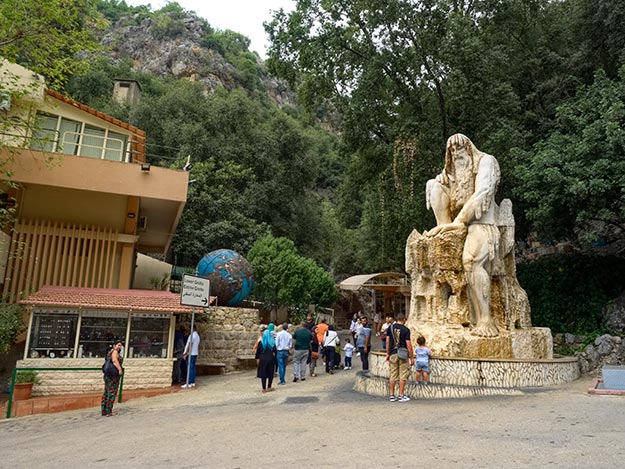
I was so impressed that I booked a second tour for the very next day. This time, I would defy the travel warnings and go to the Bekaa Valley. We began at Anjar, three miles from the Syrian border. This village was founded in 715 by an Umayyad prince who wandered into the valley to hunt birds. He liked it so much that he settled, constructing elaborate palaces, a hammam, and a mosque. Unfortunately, in 755, an argument between the prince and his father resulted in the destruction of much of the village, but enough remains to envision how magnificent it must have been.
A half-hour later our guide, Natasha, asked how we liked Anjar. We gave it an enthusiastic thumbs up. With a ‘you ain’t seen nothing yet’ grin she prepped us for our next stop. “I brought you here first because if I took you to Baalbeck first you would be unimpressed with Anjar.”
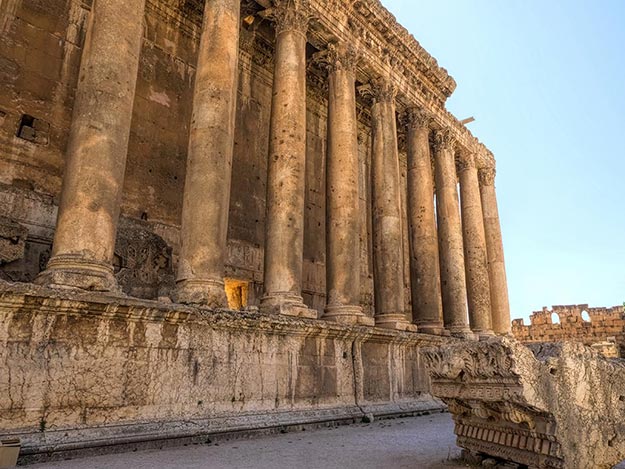
At Baalbeck, it was immediately clear that she had not exaggerated. Six massive columns of rose-colored granite rose from a platform at the end of the Great Court. Even the scaffolding surrounding them could not hide their majesty. “Just imagine,” Natasha said. “Today only six columns remain, but originally the Jupiter Temple had 54 pillars, a massive wooden peaked roof, and 38 gargoyles. Rain water was directed off the roof to a statue of a lion, where it spewed from the lion’s open mouth.”
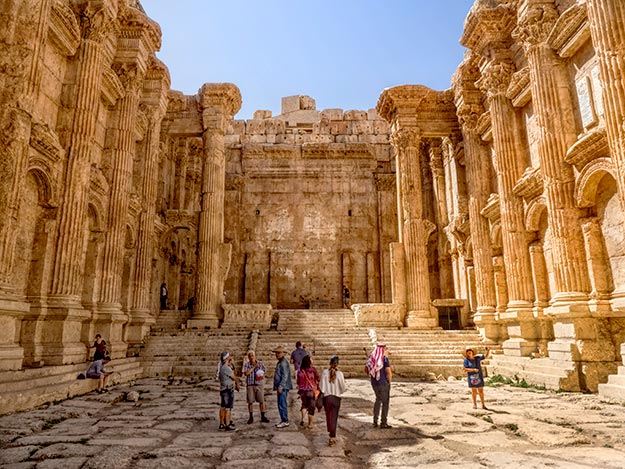
A bit further into the complex, the better preserved Bacchus Temple needed no imagination. Behemoth sandstone columns and an immense carved doorway led to an inner sanctum that could only have been built for Gods – or for Giants. I could not wrap my brain around how the ancient Romans lifted lintels weighing many tons onto slender columns, or why they spent so much time and money to create these magnificent temples.

The sights had been so amazing and the valley so peaceful that I’d completely forgotten about the security warnings until the subject came up during a late group lunch. One local man who was accompanying a friend from South Africa on the tour reiterated that it was extremely safe to travel in Lebanon. “We never have break-ins or murders. It’s even rare to hear of a mugging,” he claimed. Why, then, I wondered, were there police and military checkpoints at almost every intersection? “Checkpoints?” he repeated, seemingly puzzled. I described the overwhelming security that I’d witnessed over the past few days. “Well, I’m 20, and it’s been like that all my life, so I guess it doesn’t seem unusual to me.”

Two days later, on the way back to my hotel after yet another tour, I walked around a set of steel barricades and past a couple of rifle-toting soldiers without giving them a thought. I was fifty feet past the checkpoint before I realized that Lebanon’s heavy security had suddenly become normal for me, too. I asked myself, would I walk the streets of Beirut alone at 4 a.m.? My answer was a resounding yes. I felt perfectly at home and perfectly safe in Lebanon.
Check prices for accommodations in Beirut at Booking.com, Hotels.com, or HotelsCombined.com. Read reviews about hotels and guest houses in Beirut, Lebanon at TripAdvisor.
Disclosure: This article contains affiliate links to hotel booking sites. If you click on any of the links and make a booking, I may earn a small commission, which keeps this blog free to read.

Hi Barbara,
Thank you so much for this post. A number of years ago I lived and worked in Beirut and have missed it ever since I came back to the states. One of the goals has been to go back. I had many friends and gained a goddaughter while living there. The people are truly beautiful and gracious and you have done such a wonderful job of sharing the country through your story and photos.
Thank you for following your heart and sharing your life. I am inspired!
Hi Valery: What a kind comment – thank you so much. I’m always happy to hear that others share the same feeling for a country or city. So many think Lebanon is dangerous but it wasn’t at all and I wish more people would go there. Hopefully, if they read your comment and my story, they will!
Hopelessly out of date nonsense.
Where have you been all these years?
Yes, all very gentle and exciting and tripe. Was that before the criminal terrorists Hezbollah moved in?
What a great article, Barbara! And such detailed photos, too…so many beautiful ruins in Lebanon! The people sound very friendly and happy to see and meet tourists.
Thanks Crystal! The people were the best part of Lebanon, and that’s saying a lot, because the history and archeological sites were also magnificent.
Your visit is thought provoking.We always read negative reports of middle east countries. I will definitely have Lebanon on my bucket list for 2018. Please be kind enough to send the tour company email details that organised your tour.
Hi Madan: I didn’t go on a tour. I traveled independently, as usual. So I booked my airfare online and found a hotel on a hotel booking site. However once I was there I did use Nakhal Tours for the day tours, which was recommended to me by the hotel.
Thank you for a very interesting article. I, too, have wanted to visit this ancient land but considered it too dangerous. After reading your blog I am putting it back on my list. Loved the photos. Merry Christmas and Nappy New Year wherever you are!
Thank you so much Mark. I hope you find Lebanon to be as fascinating and as full as warm an welcoming people as I did. Merry Christmas and Happy New Year to you, too, from sunny Thailand.
Barb, your blog is the best! I was seriously considering going to Lebanon next year until I read the State Dept. warning. Thanks for your on-the-ground description from another point of view. However, given Trump’s decision to move the US embassy to Jerusalem last week, I am more concerned than ever about travel to the mid-east. What do you think about that?
Will you please provide the name of the tour company you used? If I go, I’d like to see the country with them.
Libbie
Hi Libbie: I wouldn’t be too concerned about the Trump announcement, at least not in Lebanon. I know there have been some demonstrations at the foot of the hill where the U.S. embassy is located, but protests are very localized and, as I said in the article, security in Beirut is quite strong. Frankly, I’d be a lot more concerned about going to Jerusalem at this time. As for my trip, I didn’t go on a tour. I traveled independently, as usual. However once I was there I did use Nakhal Tours for the day tours, which was recommended to me by the hotel.
I’ve never visited Lebanon; but, now, due to your article, I’ll seriously consider the trip. Thank you very much for your insightful columns, which I read with genuine pleasure.
With warmest regards from Barry Z. Rose
Thank you so much Barry – I appreciate your comment, and I hope you do make it to Lebanon. Id you do, be sure to visit Ballbeck ruins – they are stunning!